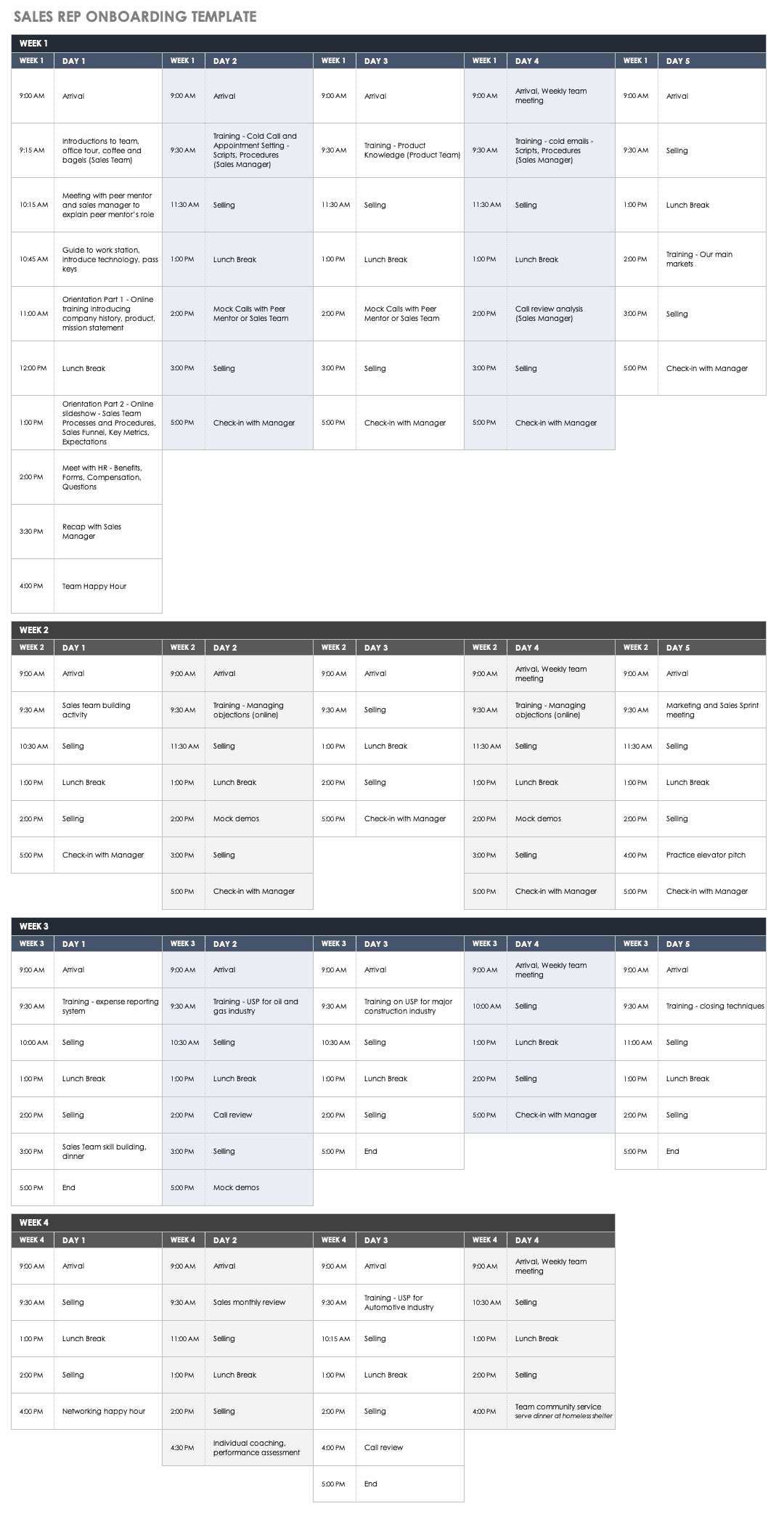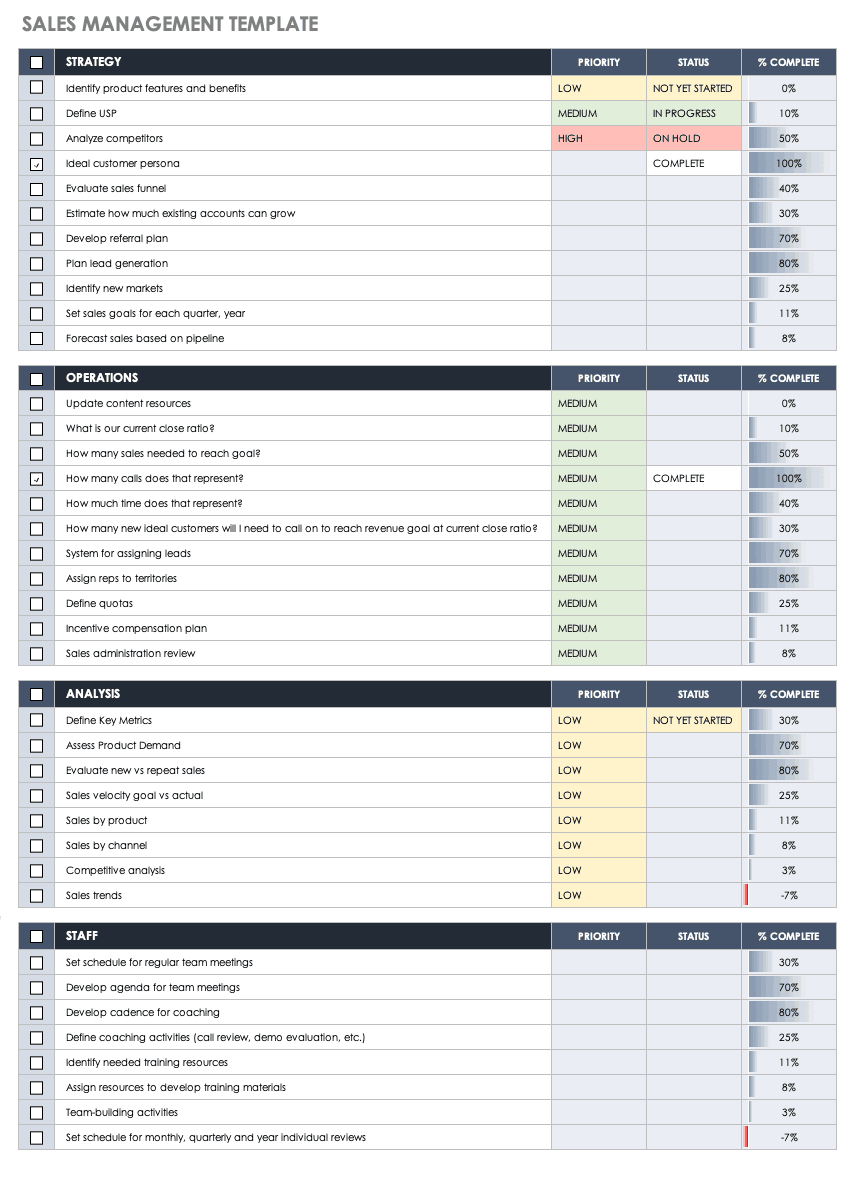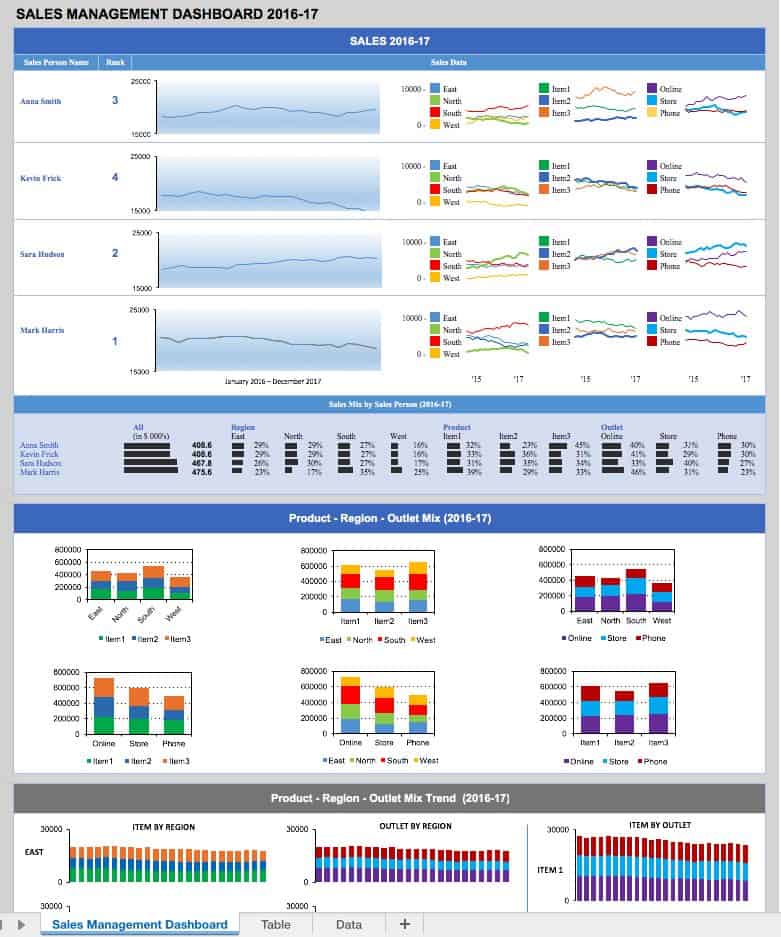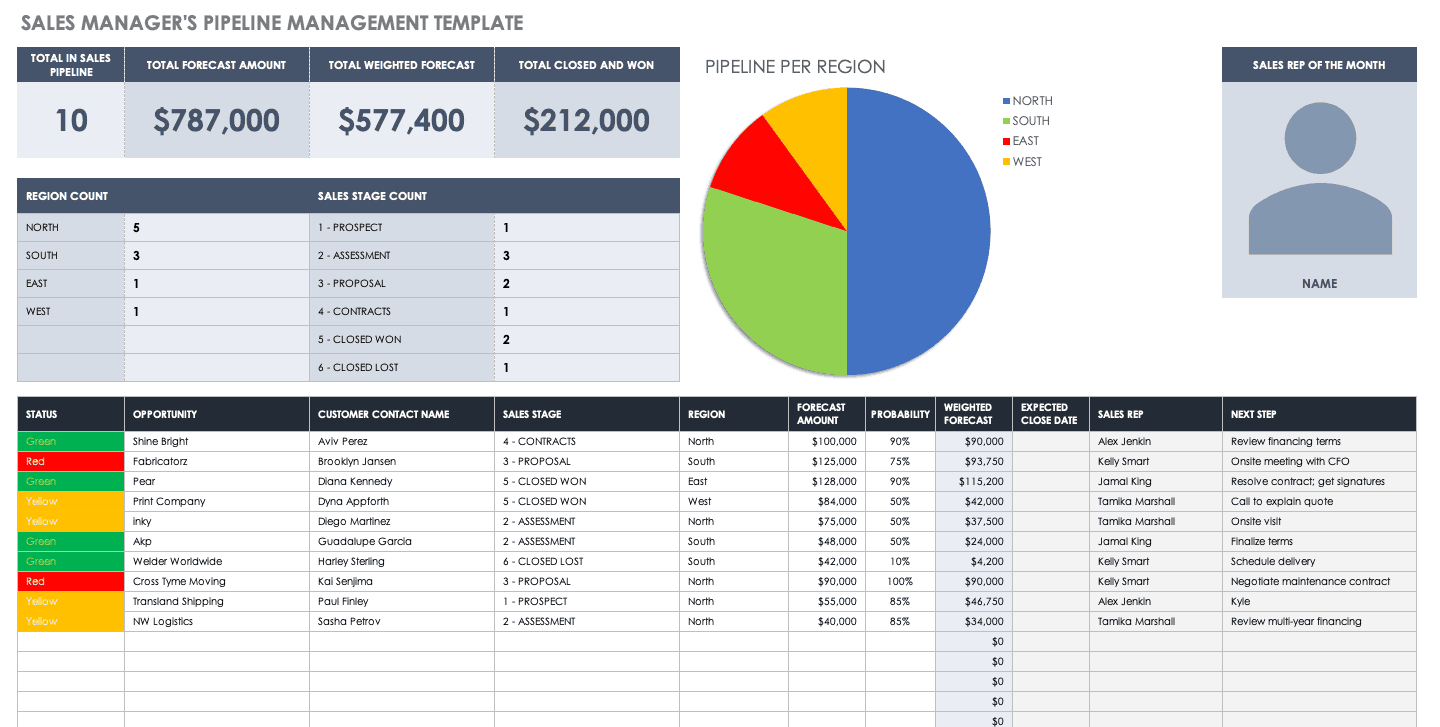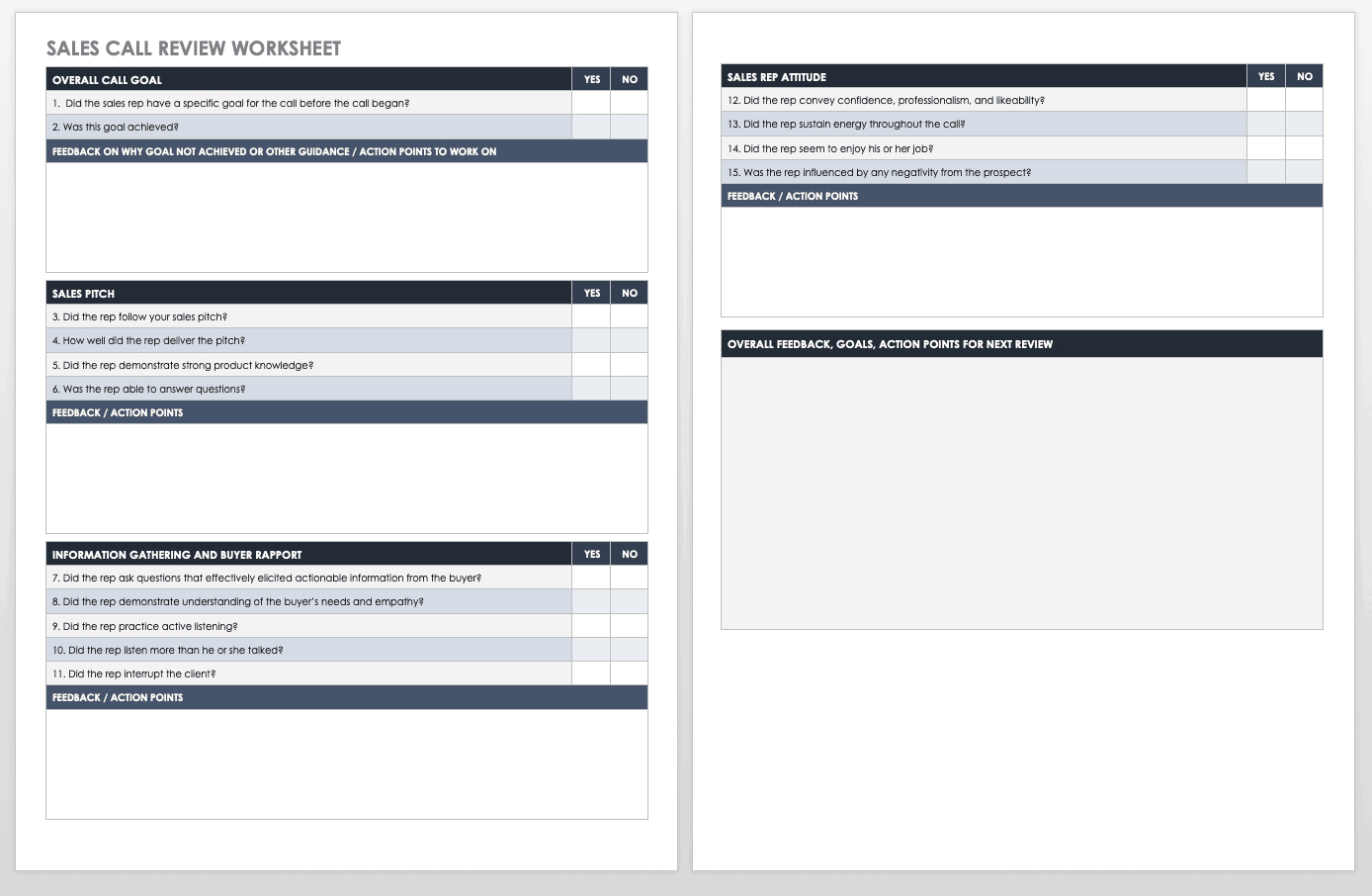What Is a Sales Management Process?
A sales management process comprises the key activities that help maximize a company’s sales, including sales operations, sales strategy or planning, sales analysis, and the recruitment and management of sales staff. Sales force leaders are responsible for sales management.
For a company to hit or exceed its sales goals consistently, the organization must cultivate the sales team and guide reps toward successful deal-making. Building and running a program that supports these outcomes is the sales management process.
Strong sales management optimizes process and performance by building a strong sales team as well as promoting effective selling techniques, the intelligent use of resources, and the coordination of related operations.
Sales managers oversee the sales management process, and they specialize in the tools, skills, and expertise that maximize sales performance. Over the medium to long term, sales managers commit themselves to increasing sales volumes from the sales staff, growing their own contributions to profits, and helping the company succeed. To achieve these goals, managers need to forecast demand and sales, set sales quotas, and write budgets.
But, the sales manager’s most crucial responsibility is managing the people who actually make the sales. Sales managers are in charge of recruiting, training, compensating, and evaluating sales reps.
Both roles — the sales rep and the sales manager — are indispensable for organizations with sales departments. The sales reps follow a sales process, the structured path of activities designed to maximize their chances of making sales. Sales managers, meanwhile, focus on how they can help reps deliver value to customers and how they can maximize the team’s sales. The sales management process comprises those activities that enable sales reps to successfully move prospects through the sales process or pipeline, including managing the sales pipeline and training.
Senior managers everywhere worry about sales execution. Companies invest heavily to develop sales processes that they hope will deliver the highest deal-closing rates. In doing so, however, they often overlook the sales management process, the infrastructure that supports the sales team.
Sales managers recognize this phenomenon. A recent survey by STAR Results sales consultancy revealed that fewer than two thirds of sales managers agreed that their organizations had “highly effective and well-understood” sales management processes. This means that many companies have the potential to deliver a significantly better sales performance by improving the sales management process.
In fact, STAR Results CEO Steven Rosen says companies spend much more on sales training, especially for newly hired sales reps, than they do on management training for their bosses. That raises the question of how sales reps can consistently succeed when their managers aren’t getting the support they need.
Some experts argue that a better approach is to make sales managers accountable for sales execution throughout the sales management process. Instead of plowing dollars into sales training, companies shift the focus of their investment to training for sales managers, especially those making the transition from sales rep to manager. In doing so, the business invests in its sales framework, maximizing the potential returns.
Particularly in B2B sales, which often entails more specialized or technical products and higher-value deals, a clearly defined and formalized sales management process is vital. The sales manager uses this process for everything from dividing and assigning territories and matching reps to accounts to determining bonus compensation.
The Benefits of a Strong Sales Management Process
Companies with formalized sales processes outperform those without, Salesforce data shows. And, veteran sales managers say that establishing a structured sales management process similarly leads to better results for the sales team, the organization, and the customers.
Without a sales management process, managers may make up their actions as they go or hopscotch from one management fad to the next. The result is confusion, resentment, and lackluster performance among sales team members.
Let’s look more closely at the ways in which a robust sales management process model can yield stronger performance:
- Greater Alignment: The sales management process makes sure the operations of the sales team align with the interests of the business and the customer. A good sales management process will incentivize sales reps to deliver value to the client and provide an excellent customer experience while pursuing top business objectives. Greater alignment ensures maximum reward on both sides of a transaction.
- Strong Leadership: A sales management process gives the leader a road map, taking much of the guesswork out of managing a sales team. Having a defined system in place promotes high quality and consistent leadership for the staff. Many sales management process models also incorporate ongoing training and development for sales managers, so those skills continue to improve.
- More Cohesive Team: When a clearly structured sales management process is in place, sales managers are less likely to run the team by using the star system or by favoring mavericks. Process models put the emphasis on using repeatable, proven sales techniques rather than on relying on the personalities or networks of individual sales reps. The model creates a more level playing field and brings team members closer together. The sales management process also guarantees that the manager will use clear and consistent benchmarks for evaluating reps. The process is systematic in assigning leads, so there are fewer rifts among team members.
- Winning Culture: Similarly, teams with a strong sales management process experience higher morale and greater passion because their members share a commitment to collective goals and have greater trust in and loyalty to one another. Having common goals reduces friction and rivalries and promotes a stronger culture. In a winning culture, the manager is also more effective at motivating sales reps.
- Clearer Priorities: An effective sales management process guides managers to set clear expectations and objectives and regularly reinforce them. The process also encourages managers to train or coach reps. When a leader engages in these activities, they impart to their team a clearer understanding of its priorities. When a manager lacks a clear framework for operating, so does their team.
- Knowing What Works: A sales management process model brings a more disciplined approach to sales management and embeds analysis and review of results. Knowing what works enables sales managers to measure effectiveness and disseminate successful strategies.
- Framework for Coaching: A sales leader’s management model establishes a method and routine for coaching sales reps. While training in many organizations is weak and haphazard, process-oriented skill development for sales reps is intentional and ongoing, and helps team members improve and generate better results.
- Greater Agility: Using a sales management process makes it easier for you to stay abreast of trends in your industry, adapt to new trends, and respond to competitive threats.
- Long-Term Improvement: Working with a sales management model is a long-term commitment, and this process gives you the opportunity to modify your methods gradually based on what is successful. So, rather than cycling through a different management fad every month, you will engineer continuous improvement over time and develop an increasingly mature sales approach.
- Better Individual and Team Results: Better results (for both managers and reps) are the biggest argument in favor of a strong sales management process. The improvement of individual and collective performance means greater focus, accomplishments, clarity, effectiveness, efficiency, productivity, and job satisfaction.
Key Statistics on Sales Management Processes
Need convincing that an effective sales management process translates into real gains for a business? The following statistics may surprise you:
Insert requested infographic of sales management statistics
- A survey by DePaul University found that 42 percent of sales reps miss their quotas, and about 26 percent of sales staff turn over annually. Given that companies incur about a $100,000 in costs per turnover, businesses have a compelling reason to improve sales management.
- Sixty-one percent of senior executives report that their sales managers have not been adequately trained in pipeline management strategies and techniques, according to Harvard Business Review.
- Fixing a poor sales management process typically translates to a 17 percent increase in sales, according to Process Street.
- Without the systematic practice and reinforcement of sales training, sales teams forget a staggering 85 percent of the material they’ve learned within three months, says Sales Performance International.
Key Terms for Understanding the Sales Management Process
Here’s a guide to some terms that are essential to sales management processes:
- Sales Force: The department or group within a business charged with making sales.
- Salesperson/Sales Representative: The member of the sales force who works directly with customers and tries to persuade them to make purchases.
- Sales Quota: The share of the total sales goal that a salesperson is supposed to bring in. It is usually defined in terms of product volume or dollars of revenue.
- Sales Development Representatives: These are sales reps who focus specifically on the prospecting aspect of the sales cycle. Once sales development reps gain prospects, they then turn them over to other sales reps to be nurtured through the sales cycle.
- Sales Manager: The individual responsible for developing and coordinating the sales force (or part of it).
- Sales Management Process: The framework that the sales manager uses to do the following: align the sales team with the business’ overall sales targets, develop the skills and expertise of the sales staff, and manage the sales pipeline. These activities are also called the sales management strategy or sales management plan.
- Lead: This term refers to a potential customer who has not yet expressed interest in purchasing a product or service that the seller is offering and who is due to be tapped by a sales rep.
- Prospect: This is a potential buyer who has expressed an interest in receiving a pitch.
- Cold Call: This refers to the first contact with a potential buyer with whom the sales rep has not previously interacted. The sales rep delivers a short product pitch with the hope of getting an appointment.
- Sales Cycle/Sales Process: This is a repeatable series of tasks that sales reps undertake, first with new leads and then with prospects. There’s a wide degree of variability in sales cycles.
- Conversion: The process of getting the prospect to take an action or make a choice that brings them to the next step of the sales funnel. The most important conversion is the close.
- Close: This is the goal of the sales process: persuading a prospect to purchase a product or service and agree to a deal.
- Close Ratio: This is the proportion of closes to sales presentations or product demonstrations.
- Sales Funnel: A visual representation of the sales cycle in which prospects go in at the top, closed deals come out at the bottom, and everything else gets filtered out in between.
- Critical Success Factors (CSFs): Also referred to as key result areas or key success factors, these are attributes that managers deem necessary for achieving a sales goal. For example, the CSFs for a sales team might include a well-defined sales process, teamwork, and experienced leadership.
- Metrics: These are numerical performance indicators used to calculate and compare historical, present, and future performance. One of these indicators is revenue, which is how much a business sells. Another is the retention rate, which is the percentage of customers who stay subscribed to an ongoing service over a fixed period of time. A third is sales velocity, which is the time taken to go from initial contact to a closed deal.
- Activity-Based Selling: This refers to focusing on sales activities within one’s control, such as the number of demos sales reps perform, as a way to increase sales revenue rather than focusing on results, which are outside the sales force’s control.
- Sales Reporting: This is the documentation of a company’s sales activities and results.
- Marketing: This is the area of a company that promotes its products and services. Although this activity is separate from sales, the two departments are closely related.
- Customer Relationship Management Tool: This is the technology that centralizes the tracking of customer relationships. The tool also manages and draws from the knowledge base, a repository of the sales knowledge held by a business.
What Is Involved in Sales Management?
Under the umbrella of sales management activities, sales managers have four main responsibilities: sales operations, sales strategy, sales analysis, and recruiting and training. The following is a detailed description of these four responsibilities:
- Sales Operations: This comprises the detailed daily work of generating sales and is the part of sales management most closely connected to what sales reps do. The sales process, sales resource management, territory assignments, deal-making, and other standard sales operations fall under this aspect of sales management. Among the most important responsibilities are establishing a clear, efficient approach to managing the sales cycle or sales pipeline and enabling sales reps to meet their quotas consistently. Other tasks, like managing a library of sales content and overseeing the many different sales communication channels, also fall under the scope of managing sales operations.
- Sales Strategy: This is the planning behind efforts to maximize sales volume and revenue generation. Sales managers undertake sales forecasting and harness historical sales data to set sales goals. They strategize about the best way to meet objectives, and this often includes choosing various selling techniques. Making sure that the sales team has effective content to support its efforts is also important and may require working with internal or external content creators. Sales strategy aligns the sales force’s goals with the business’ strategic objectives. The manager assigns leads to salespeople on the bases of territory, industry expertise, or accounts already managed. The manager also sets individual sales quotas (i.e., goals for each salesperson).
- Sales Analysis: While sales strategy is all about determining how to set and meet goals, sales analysis looks at whether or not an individual or team met its goals and why. Sales analysis also extends to the collection of sales process data, which can be used to fine-tune or even re-engineer the sales process. Analysis creates a valuable feedback loop that enables sales managers to pursue more ambitious goals.
This area of work tracks performance metrics, sales funnel data, and sales reporting, such as the number of deals in the funnel, the average deal size, the close ratio, and the average sales velocity. The close ratio and average sales velocity, along with other numbers, such as the sales revenue generated vs. the sales quota, can also be used as performance indicators for salespeople.
Sales managers conduct quarterly and/or yearly performance reviews that assess progress toward sales targets and the long-term health of the sales pipeline. Managers try to discern where the opportunities for business growth will emerge and the skills their salespeople will need to close these opportunities. - Recruiting and Training: This aspect of sales management covers the handling of the sales department’s most valuable assets: the sales reps. Finding, hiring, onboarding, training, coaching, motivating, and rewarding the sales staff are all significant parts of the sales manager’s job.
A systematic hiring process can help the sales manager avoid employing a sales rep who’s a bad fit, which can be hugely expensive in terms of lost revenue and missed opportunities. By some industry estimates, these costs can average $500,000 or more.
Use this template as a day-by-day onboarding program for a new sales hire. It covers the recruit’s first four weeks in the position to make sure they settle smoothly into the role.
Download Sales Rep Onboarding Template and Example
Excel | PDF | Smartsheet
Coaching and developing sales reps is another important part of the manager’s job. Most sales managers began as sales reps themselves. So, sales managers can lead by speaking about their own successes and failures, modeling effective sales techniques, and teaching sales reps how to build relationships.
“Be clear about what any consequences of continued poor performance will be, communicate these to all of the team, and stick to them,” he concludes.
Companies reap superior benefits when they create structure around coaching, including choosing specific methods and content. Without direction, many managers default to using sales ride-alongs or shadowing as their main mode of coaching. Hubspot Research indicates that sales reps learn more from their peers than from company training material — which means businesses are not doing a good job of providing the training that reps need.
And, don’t forget about fun. Building camaraderie is another critical part of the sales manager’s job. Incorporate fun team-building exercises and activities to bond the team.
Use this template to document the key activities in your sales management plan, assign priorities, and record progress toward completion.
Download Sales Management Template
How to Establish a Sales Management Process
So, you may agree that sales managers need to address these important areas of activity, but you may not see why a highly structured process is necessary.
“I teach each of them that the sales manager is the rock, the consistency the team needs between the highs and lows of the sales job,” he explains. “This means every manager needs to have a consistent way of doing things — aka, a process. This includes everything from how you measure your team to how you motivate them and hold them accountable for sales activities. Your sales meetings, pipeline check-ins, forecasting, recruiting, and commission all need to be managed by processes in order for you to build a sales machine,” he says.
If you want to formalize your own sales management process, here is a step-by-step plan:
-
Check Your Foundation: First, be sure that you have a well-organized underlying sales process. A sales manager cannot manage effectively in the absence of a clearly defined and widely understood sales process. If the sales process is flawed or nonexistent, management will devolve into little more than a glorified firefighting job.
-
Choose Your Model: The next step is understanding the sales process management model currently in place at an organization and either committing to it or replacing it. There are three common sales process management models:
- The Island: The island is defined by its minimal structure and lack of organizational formality. In this model, sales reps are provided with access to the basic tech they need to do their jobs, a little training, a list of products, a commission structure, and maybe an office, if they’re lucky. The island is a classic do-or-die model of sales, and it requires little from management. On the other hand, it’s ultra-competitive instead of collaborative, and it’s virtually impossible to make sure the salespeople stay on script.
- The Assembly Line: This model is driven by specialization. The sales manager divides the staff into distinct teams, each responsible for a different phase in the sales cycle: There are salespeople who develop leads, salespeople who go prospecting, salespeople who do demos, salespeople who close deals, and salespeople who manage delivery and customer satisfaction. On the positive side, this model is a great way to harness special skills. It also makes gathering metrics and fine-tuning efficiency a breeze, because its structure allows for the easy isolation of problems. However, this approach requires a large team, can lead to silos, and may mean a bumpy ride for customers, since they don’t have a single point of contact throughout the sales process.
- The Pod: This model splits the sales force into small teams, or pods, and assigns a specific customer type to each pod. As with the assembly line, the idea here is to increase efficiency. And, just like in the assembly line, there are often salespeople within each pod who specialize in different phases of the sales cycle. But the pod is more customer-centric than the assembly line, because, with this model, each customer gets their own closely coordinated team of specialized salespeople. The members of each pod have worked together long enough that they cohere into a smoothly efficient team. On the downside, the pod model may limit individual initiative and competitive drive, qualities that are the traditional lifeblood of sales reps.
-
Add Management Processes: Once you decide whether to continue with the same sales management model or start fresh, create goals for where you want to be over the short, medium, and long terms in the key areas of operations, strategy, analysis, recruiting, and training. Benchmark where you are and implement a way to track progress. These actions require you to identify some key performance indicators (KPIs).
-
Measure, Monitor, and Iterate: Be diligent about documenting data in the customer resource management (CRM) system, including goals and performance. Keep tabs on sales forecasts and continuously seek to improve the efficiency and effectiveness of the sales process. Sales is a high-pressure environment with many moving parts. Many sales managers are content with simply keeping things running the way they have been. But, a great sales manager realizes there’s always room for improvement.
Insert requested image of steps in building a sales management process
Building Your Sales Management Plan with Templates and Examples
Once you understand the sales management process model you’ve chosen, you can build out your plan with details. A key strength of the sales management process is that it creates a daily, weekly, monthly, and quarterly plan to follow.
Your process should address the following questions:
- How often do we meet as a team?
- How often do I meet with reps individually (quarterly or monthly is best)?
- How frequently do I evaluate sales pipelines?
- What is my cadence for updating sales forecasts?
- When do I coach reps and do performance reviews?
- What skills and expertise do reps need to develop?
- How do I track how individual reps as well as the team as a whole are performing vis a vis the department’s overall goals?
- How often are quotas and bonuses set?
- How do I know if we are on track?
- What measures do I take if we are not?
- Have I identified areas that will yield growth?
- What is not working about our current operation? What needs to change?
Sales Management Process Worksheet
You will find it helpful to develop your sales management plan in writing, and you can use this worksheet to make sure you address the major components. Reflect on the questions about your goals and plans to improve sales management. Use your answers to build your process.
Download Sales Management Process Worksheet
Daily Sales Management Process Template
Creating a sales management process dashboard will help you track progress and identify what needs work. Use this template to instantly see the daily status of your team’s overall sales, along with information about customer and revenue growth.
Download Daily Sales Management Process Template - Excel
Sales Management Dashboard Template
For longer-term tracking, you will want to watch how the sales staff is performing over time. Use this template to monitor individual reps and product mix.
Download Sales Management Dashboard Template - Excel
Sales Pipeline Management Template
As part of your sales management process, you will also want to keep close tabs on the sales pipeline. Use this template to see how the progress of sales activities compares with your goals.
Succeed in Sales Management by Being Process Oriented
Sales managers can set themselves up for success by being process oriented. That entails developing systems and frameworks for the various dimensions of managing a sales team.
Having established procedures helps ensure you stay on track. These routines also decrease your reliance on guesswork and improvisation, which can lead to inconsistency and weak management. Of course, exceptional circumstances will arise, so you also have to be flexible. Veteran sales leaders recommend building processes around the following best practices:
- Set Up a Framework for Making Decisions: When you have to make decisions (for instance, regarding the allocation of resources to sales people or who to assign to specific accounts), use the same criteria and process every time. While this may sound like common sense, many managers will go with their gut or change their thought process on the fly. Consistency is important for several reasons: to maintain fairness, gain an accurate sense of what has worked and what hasn’t, and build a transparent culture.
- Emphasize the Front End, Not the Back End, of the Sales Process: Sure, every team could do with a super closer to bring deals home. But, putting more energy into the early stages of the sales process may have a greater impact, because doing so generates more prospective deals. If good closing is grabbing as many pieces of a pie as possible, a strong opening enlarges the pie.
- Identify the Current State and Desired Future State of the Sales Force: No sales force is perfect. But, a sales manager who wants his team to be as close as possible to perfect will identify the gap between the current and future state and see what they can do to bridge them. The way to push forward is to keeping setting high goals, albeit realistic ones.
- Manage Expectations: In the process, the sales manager will often need to fend off queries about why sales aren’t doing as well as the C-suite thinks they should be. The sales manager knows that change takes time, but that concept often seems lost on others. Building a habit of transparency and accurately representing the state of sales performance goes a long way toward addressing this issue.
- Recruit Salespeople Who Can Be Coached: Salespeople need to be able to shift with their industry in order to stay on top of their game, and that calls for a willingness to learn. With coaching must come a commission structure that incentivizes the sales reps’ putting their learning to use. Also, coaching needs to be systematic, not a quickly forgotten, one-time endeavor.
- Get Specialized: A one-size-fits-all approach to sales might work for some consumer products, but not for many others, especially in B2B sales. Encouraging specialization among sales reps will enable your team to work confidently in different verticals and markets. Being able to sell to a diverse customer body makes your team more successful.
- Reap Rewards by Creating Value for Customers: Referrals are a critical source of business and revenue growth. But how do you earn them? By putting thought into how you can create value for a customer, pitching your product to them accordingly, and then following through on what you’ve promised.
How to Develop a Sales Management Process without Micromanaging
When a well-defined sales management process doesn’t exist, sales managers may start micromanaging. This makes sense: Without a clear process, you may feel you lack control over or are unsure of how the team is doing. So, you react by micromanaging.
But, this can backfire. You may get in the way of sales reps’ doing their work, and if you are constantly second-guessing the reps, they may become unwilling to use their own best judgment to make decisions. You may even stir their resentment.
So, how do you know when you’re crossing the line from responsible oversight to micromanagement? Here are the questions sales managers ask themselves in order to avoid micromanaging:
Do I know when to step into the sales cycle?
The sales manager who intervenes in the sales process may be disruptive unless there’s a clear, mutual understanding of when a manager reserves the right to step in. Similarly, sales reps may ask you to get involved if they are struggling to close an important deal, but your priority should be helping them build their sales skills through coaching. You will lay the foundation for greater long-term success if you help them brainstorm and troubleshoot rather than doing these things for them.
Do salespeople know the sales process inside and out?
If the salespeople don’t understand the selling process, the sales manager has no choice but to micromanage. Therefore, you should put your effort into onboarding and training reps, so you can avoid the need to get involved in the details.
Do I have an intentional approach to coaching?
The line between coaching and micromanaging can blur if you do not have a well-designed coaching process that addresses when, how, and what. You should assess where each rep needs personalized coaching, have a schedule for one-on-one coaching, and create a format for those sessions. For example, you may want to meet once a month to assess how a rep handles a sales call.
Rather than providing just a few quick, off-the-cuff comments, try using a feedback form. Then, review it with the rep. You can download this worksheet, which evaluates different aspects of how the rep handles calls and which sets action points to work on. Of course, this does not mean the end of informal coaching. But, if you are struggling to break a micromanaging habit, emphasize scheduled, formal coaching.
Download Sales Call Review Worksheet
How do I use data?
With the modern, plugged-in sales force comes an explosion of data that tracks everything from how efficiently salespeople spend their time to how many attempts they make to complete a cold call. With so much data often comes a nagging feeling that it must be used. But, be selective. Good sales managers don’t overwhelm their sales force with metrics. An excessive focus on data can also backfire by giving reps an incentive to make the numbers look good at the expense of truly fulfilling the underlying objective.
How do I strike the balance between coaching and breathing down someone’s neck?
This is a tough question to answer, and the truth is that it varies by personality, company, and sales force. That’s why good sales managers must be good people managers, too.
Sales managers can steer clear of micromanagement by hiring competent and coachable sales reps, setting clear expectations, providing good training, and making time to have one-on-one conversations with their salespeople. Fostering a cordial relationship drastically reduces the likelihood of salespeople feeling like their toes are being stepped on.
The Role of the Sales Manager in the Sales Management Process
As a sales manager, you lead the sales force. Depending on the structure of the organization, the sales manager may have any one of a number of titles: sales supervisor, district sales manager, regional sales manager, general manager, vice president of sales, or director of sales.
Sales managers can reach their positions from a number of different routes, though the traditional path is starting as a sales rep and working one’s way up. The skill set of a sales manager is broader than that of a sales rep, and only a fraction of sales reps are cut out for management.
Here are some of the key attributes and skills of the sales manager:
- Strong time management
- Organization
- Strong communication skills
- Ability to work well in a high-pressure environment
- Direct, clear style
- High personal productivity
- Consistency
- Ability to balance the short-term goals with the long-term strategy
- Eye for talent
- Ability to teach
- Willingness to delegate
- Passion for teamwork
In an ultra-competitive environment (as sales almost always is), sales managers must be able to foster camaraderie around shared goals and a vision that are in keeping with the overall goals of the organization. Effective leadership is what keeps the sales force aligned with the company brand. In order to be effective, the sales manager must clarify the organization’s mission statement, evangelize company values, and define the principles upon which the sales force operates. You provide direction and oversight for sales processes and handle recruitment and training.
According to sales experts, coaching, performance management, business planning, leadership, and the recruitment of top performers are among the sales manager’s most essential responsibilities. While that is a challenging list of boxes to check, the sales management process allows sales managers to bring a structure to their many responsibilities so that they’re able to balance their time and do justice to each.
Perhaps more than other industries, the sales field is regularly barraged by fads of the latest techniques and hottest motivational speakers. So, another key part of the sales manager’s job is to avoid getting distracted by the latest trends but still be willing to incorporate new ideas and sound methods that will drive revenue generation.
Sales has its rewards too. The Bureau of Labor Statistics reports that sales managers made a median income of $121,060 in 2017, about double what sales reps make. A bachelor’s degree is the typical level of education. Plus, jobs in sales management are projected to grow as fast as the national average for all jobs over the next decade.
For many sales managers, bonus pay makes up a big part of their compensation. Glassdoor.com reports that as of October 2018, the average base pay for a sales manager is about $77,500, with bonus pay of about $23,000. Some of the top-paying U.S. markets for sales managers include New York City and nearby areas as well as Silicon Valley, according to USNews.com.
A Great Sales Manager Anchors the Team and Masters Time Management
While the sales manager takes ultimate responsibility for their sales team’s revenue generation, the salespeople represent the face of the company when it comes to potential customers. It’s the sales team — not the sales manager — who is the backbone of the sales department, and the sales management process provides a backbone for the sales manager’s work.
By making sales reps feel like they’re part of a team and by taking a genuine interest in coaching and rewarding them, a great sales manager can sidestep some of the petty competitiveness that characterizes many sales departments. After all, the secret to getting the best out of any staff members lies in making them feel like valuable members of the organization, rather than just small cogs in the system.
But, of course, the sales manager’s role has some tough challenges. Most sales managers get little training on how to do their jobs and struggle with learning how to manage. Frequently, they are also burdened with many tasks that do not directly relate to sales leadership or revenue generation, so time management is especially challenging. Veteran sales managers recommend exerting ruthless control over your calendar in order to spend as much time as possible on high-value activities.
How Technology Aids the Sales Management Process
On the bright side, technology has made managing some aspects of the sales management process much more efficient.
Your CRM system should have some analytics available, and you can use those as part of your sales management process to evaluate where leaks may exist in your sales funnel and how individual reps are performing. Historical data provides benchmarks to make comparisons more evident.
Further tools that exist either within the CRM or as integrations produce sales reports, sales management dashboards, and sales forecasts. As part of a new generation of user-friendly tools, these applications make communicating sales data effortless, particularly because of their graphics and automated report generation capabilities.
Your sales management process dashboard can capture key KPIs, like opportunities won vs. the quarterly goal. Sales managers can use a similar dashboard to assess which reps need support or who is outperforming.
Insert this image here
Insert this image here
Finally, some lighter technology — such as mobile scanners, online note-taking apps, e-readers, and mobile calendars — can add efficiency.
Final Takeaways for Sales Management Process Strategy
In conclusion, here’s our expert roundup on the sales management process from some of the leading experts in the field:
-
Don’t Ignore the Sales Process, but Don’t Overdo It Either: The sales process is the heart of sales management. Without an effective sales process, even effective sales management is toothless. But, the sales process is a human process, not a mechanical one, and too much tinkering will only confuse the salespeople and bog them down. If a process isn’t broken, don’t fix it.
-
When Problems Do Arise, Act Quickly and Decisively: It’s a tough tightrope to walk: How does a sales manager balance the need to address genuine problems in the sales process with the desire not to over-engineer it? The answer is learning through experience. Most sales managers have paid their dues as sales reps before they get to where they are. This experience helps them differentiate between the occasional slip-up and the systemic leak that needs plugging.
-
Honor the Sales Reps’ Time: Administrative work often takes up a large chunk of sales reps’ days. Wherever possible, commit to an ongoing effort to remove any non-selling work from your reps’ responsibilities.
-
Motivate Using Team Appreciation, Not Just Numbers: This one’s simple. Who do you think will consistently sell more: a sales rep who is amply rewarded for sales with commissions or a sales rep who is rewarded with both generous commissions and the warm feeling of helping their fellow teammates? Clearly, the latter. And, when you get wins, celebrate them — with everyone. Winning a big account isn’t just a feather in an individual cap; it’s also a step toward collective goals.
-
Keep Learning: We know sales reps need to keep learning, and that holds true for sales managers as well. There are many sources of learning: Courses, more experienced sales reps, and blogs are just a few. Some of the most popular blogs include Sales Hacker’s B2B Sales Blog, Jill Konrath, Heinz Marketing’s Daily B2B Sales & Marketing Insights, HubSpot, and Salesforce Blog. Set up a Google news alert for key terms that are relevant to your product space and interest.
Improve Your Sales Management Process with Smartsheet for Sales
Empower your people to go above and beyond with a flexible platform designed to match the needs of your team — and adapt as those needs change.
The Smartsheet platform makes it easy to plan, capture, manage, and report on work from anywhere, helping your team be more effective and get more done. Report on key metrics and get real-time visibility into work as it happens with roll-up reports, dashboards, and automated workflows built to keep your team connected and informed.
When teams have clarity into the work getting done, there’s no telling how much more they can accomplish in the same amount of time. Try Smartsheet for free, today.

